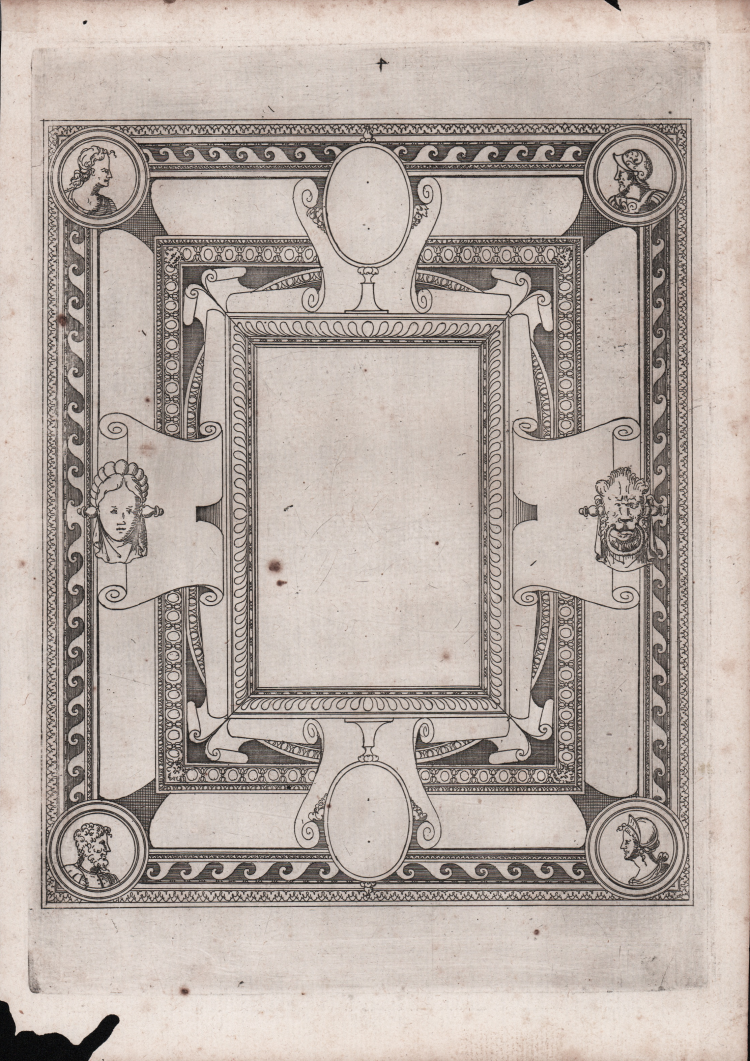



| Reference: | S10943 |
| Author | Jacques Androuet du CERCEAU |
| Year: | 1560 ca. |
| Measures: | 170 x 240 mm |



| Reference: | S10943 |
| Author | Jacques Androuet du CERCEAU |
| Year: | 1560 ca. |
| Measures: | 170 x 240 mm |
Etching, 1560 circa, not signed.
From the series: I soffitti di Fontainebleau.
Excellent work, printed on contemporary laid paper without watermark, with margins, in very good condition.
|
cfr. Primatice Maitrè de Fontainebleau pp. 93,153, 318, 412, The French Renaissance in Prints pp. 157, 366/379.
|
Jacques Androuet du CERCEAU (Parigi circa 1520 – Ginevra 1586 circa)
|
Jacques du Cerceau, architect and prolific engraver, had a great importance on the propagation of the Italian Renaissance decorations in France. He was particularly attracted by the decorations and the ornamental stuccos of Palazzo of Fontainbleu, realized by Rosso Fiorentino and Primaticcio, drawing inspiration from them, instead that from the frescos. Between 1550 and 1570, he published many collections of friezes and decorations, inspired to the different rooms of the palace; his works, such as the Livre de Grotesques (1566), contribute in a very important way to reconstruct the location of the fresco in the Galleria d’Ulisse of the palace, which had been destroyed in 1738/39. His engravings have been fundamental for the following centuries.
|
|
cfr. Primatice Maitrè de Fontainebleau pp. 93,153, 318, 412, The French Renaissance in Prints pp. 157, 366/379.
|
Jacques Androuet du CERCEAU (Parigi circa 1520 – Ginevra 1586 circa)
|
Jacques du Cerceau, architect and prolific engraver, had a great importance on the propagation of the Italian Renaissance decorations in France. He was particularly attracted by the decorations and the ornamental stuccos of Palazzo of Fontainbleu, realized by Rosso Fiorentino and Primaticcio, drawing inspiration from them, instead that from the frescos. Between 1550 and 1570, he published many collections of friezes and decorations, inspired to the different rooms of the palace; his works, such as the Livre de Grotesques (1566), contribute in a very important way to reconstruct the location of the fresco in the Galleria d’Ulisse of the palace, which had been destroyed in 1738/39. His engravings have been fundamental for the following centuries.
|